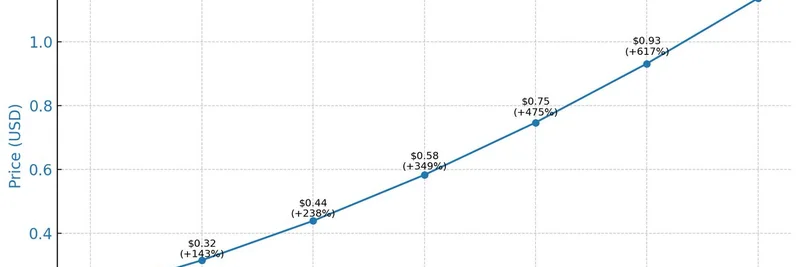If you've been keeping an eye on the meme token scene, you might have heard about HeavenDex and its native token, LIGHT. Recently, analyst Shaunda Devens from Blockworks Research dropped a fascinating thread on X breaking down how HeavenDex's Flywheel buybacks are shaking things up. Let's unpack this in plain English, step by step, so you can see why this could be a game-changer for LIGHT holders.
Understanding the Basics: How AMM Liquidity Pools Work
First off, what's an AMM? It stands for Automated Market Maker, which is basically a smart contract that lets people trade tokens without a traditional order book. HeavenDex uses a constant product AMM, following the simple formula: x * y = k. Here, x is the amount of USDC in the pool, y is the amount of LIGHT, and k is a constant that doesn't change.
When someone buys LIGHT with USDC, they're adding to x (USDC) and removing from y (LIGHT). This shifts the ratio, pushing the price up because the new price is just x divided by y. It's like tipping the scales—more USDC in the pool relative to LIGHT makes each LIGHT worth more.
For example, imagine a pool starts with 100 USDC and 100 LIGHT, priced at $1 each. If you buy 10 LIGHT, you add USDC and remove LIGHT, and boom—the price jumps above $1.
HeavenDex's Flywheel: Turning Revenue into Token Buybacks
HeavenDex, a launchpad and DEX backed by Colosseum (from the Solana Foundation), raised a whopping $23.6 million. The cool part? Their Flywheel thesis means all revenue gets funneled back into buying and burning LIGHT tokens. Only 5% of that raise went into initial liquidity, which keeps the pool "thin." In AMM terms, thin liquidity amplifies price movements because even small buys (or sells) shift the x/y ratio dramatically.
The thread highlights how allocating less to liquidity boosts the impact of buybacks. Check out this chart showing price impact versus liquidity depth for different buy sizes—lower liquidity means bigger pumps from the same buy amount.
Strong Revenues Fueling the Fire
HeavenDex isn't just talk; it's generating serious fees. In the last three days alone, it raked in $864K, averaging about $288K per day. All of this gets recycled into LIGHT buybacks. With the current pool holding around $1.96M in liquidity (split between 7.6M LIGHT and 980K USDC), a single $275K buyback can spike the price from $0.13 to $0.21—that's a 63% jump!
Here's a snapshot of HeavenDex's daily volume and fees, courtesy of Dune Analytics, showing the revenue stream that's powering these buybacks.
Projecting the Price Path: 774% in a Week?
The real excitement comes from compounding these daily buybacks. Assuming consistent $274K daily inflows, the thread projects a staggering path: starting at $0.13, LIGHT could climb to $1.14 in just seven days—a cumulative 774% increase. Each day builds on the last, as the pool's reserves shift further in favor of higher prices.
This chart illustrates the potential trajectory, with labels showing the daily gains.
The Flip Side: Risks in Thin Liquidity
Of course, it's not all upside. Shaunda points out that thin liquidity cuts both ways—big sells from presale holders could tank the price just as easily. But with initiatives like Stargate (likely a reference to cross-chain or liquidity bridging features), HeavenDex might mitigate some of that downside. Plus, the Flywheel's buy-and-burn approach reduces supply over time, which could support long-term value.
For more details, check out the original thread on X or HeavenDex's docs.
In the wild world of meme tokens, mechanisms like this Flywheel make LIGHT stand out as more than just hype—it's got real revenue backing it. If you're into blockchain DEXes or hunting the next big meme play, keep an eye on this one. What do you think—will LIGHT hit that $1 mark soon?


